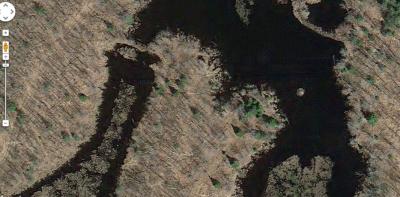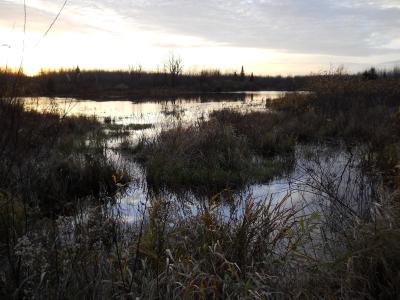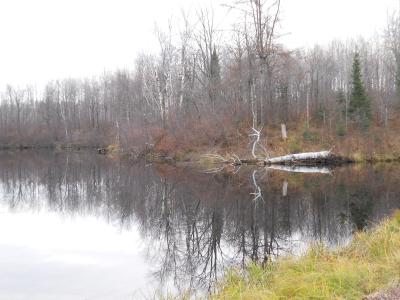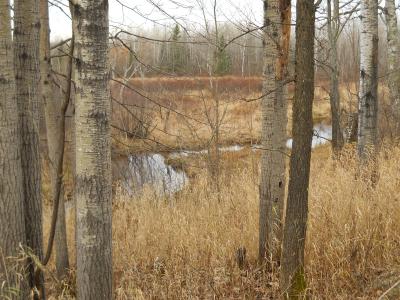Grouse put up a lot a great info. I differ on a few points, but then defining “open” leaves a lot of latitude for discussion and interpretation. Coyotes will go into open areas that are directly related to their habitat. Maybe not an open 80 acre field, but they will often stand in the grass or brush and investigate what is out there. Even here in mostly open farm land, we shoot most of our fox/coyotes standing in the fence row while looking for us because they don’t run out to the middle of the field.
Coyotes don’t just happen to visit a section of land or just happen to be there. They are in every part of their range for a specific reason. There are high percentage areas that WILL hold coyotes more often than others. Especially in dense wetlands like tag-alder/beaver swamps. Take a moment and quit thinking about the coyote. Think about hunger/food. If your hungry, where are you going to go??? Refrigerator, grocery store, or a restaurant…. and most likely in that order.
Coyotes are very notorious for returning to a free meal – thus a dirt hole. They’ll eat, get full, and bury a partial rabbit, bird, stuff they regurgitate, and so on. If they don’t have something in the refrigerator, they go to the store. Where do you see the most rabbits, grouse, mice,…. Not in a general term, but very specific? What is unique about that one spot that you always know you’ll see some cotton tail or snowshoe hare? For me, its always along the edge of the frozen tagalder swamp where the ground elevates a few feet and a line of poplar trees start. Usually quite brushy and a freshly fallen poplar tree. To me, that is the meat section of the grocery store.
Desperation spots would be the restaurant. Just like you, you know you can save money by going to the grocery store and fixing a meal yourself. But when extreme hunger kicks in, they will fore-go the risk and enter the very open spots hoping for a free meal. Getting a coyote to surpass their natural instincts to remain cautious is probably the most amount of work and largest investment of time.
Where do you sleep? At the grocery store, in the middle of the road between the restaurant and grocery stores? Most likely in the security of shelter from other predators (wolves), the elements, and so on. You probably have a view of the road to see anyone coming towards you. You also want some warmth from the morning sun and the ability to escape wind, with having a view of whats going on in the neighborhood. Coyotes do the same. Within their range, the will have very high percentage bedrooms. They don’t randomly plop down and decide its time to sleep. They have areas that they will feel the most secure in for sleeping. It can be multiple areas, and often so! But there are still very high percentage spots where they den. Denning – could be along a log, ground den, grass, under evergreens…all depends on their environment and shelter needs. Not always, but very common when you hear coyotes sounding off and beginning to serenade, they are at or near their den area. Ky-Yi is more often in the route to the grocery store.
You stated an observation that I think is very true and its good that you understand this. Coyotes have the advantage to see with their nose and most likely have circled you without you knowing it. It happens MUCH more than people think. Especially in thick cover! While walking back from a set, I’ve seen tracks in my tracks and saw where they danced back and forth and decided to walk away rather than coming in any further. Unfortunately, there are not a lot of stupid coyotes amongst the packs.
The screen shot is one of my favorite places in northern WI, near Prentice. Nearly all beaver swamp with a small beaver pond that changes. Until freeze up, its worthless. Once frozen, its a mecca for wildlife. Though, not “everywhere” is good. in fact, about 90% of it is vast waste land when considering holding rabbit, grouse, mice…. There are only a few good elevated spots that remain dry.
But years ago, I learned to walk the deer trails and let the available wildlife tell me where to go. Deer and coyotes are not too different in travel methods. Once I began to look at what I saw, I noticed the deer trails weaved in and out of the edges of all the key habitat necessities. From there, it was identifying the best vantage points. Lets be realistic on expectations – if your standing in a room with no windows, you don’t have a view. Same for in a swamp. You sometimes have to forgo areas because you do more education to the coyotes, than anything else. Pick you vantage points carefully and IF you can get to them undetected. It could be a 30 yrd view or a 100yrd view. Every one may be different.
Use the terrain to your advantage. Use areas they don’t want to enter or cross as your backdrop so they can’t circle you.
Scent control – SCENT CONTROL!
e-callers – Great for getting you separated from the call. Very effective tool in allowing you to call to a desired spot, and yet have you sitting at the best vantage point.
Sorry I have to cut this off….time has been too short for me recently. Daughters in another wrestling tournament and I have to go. When I can get back to the puter, I’ll finish up





